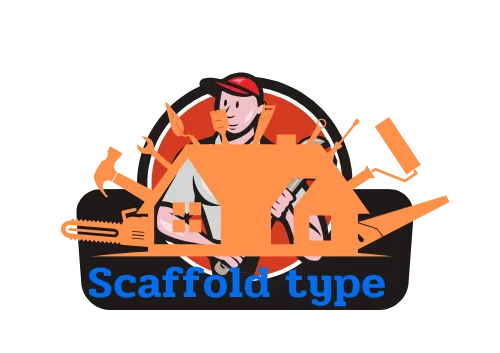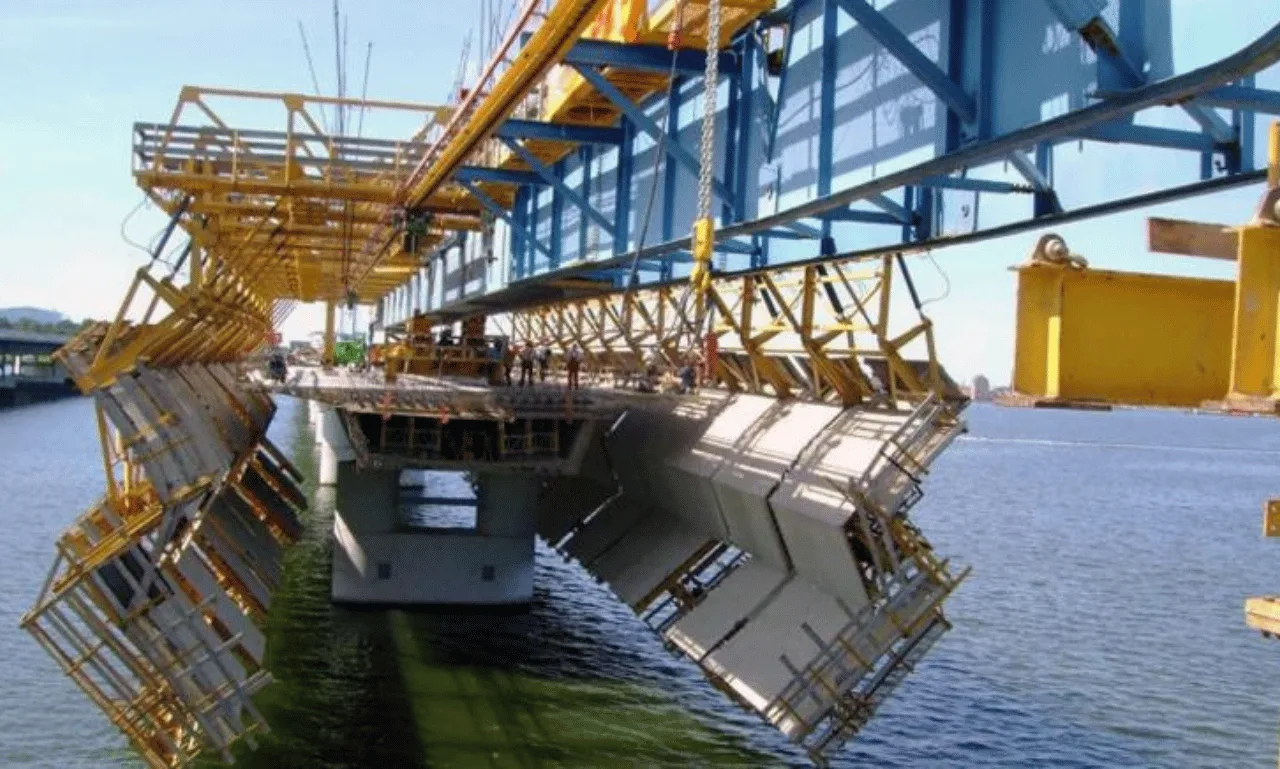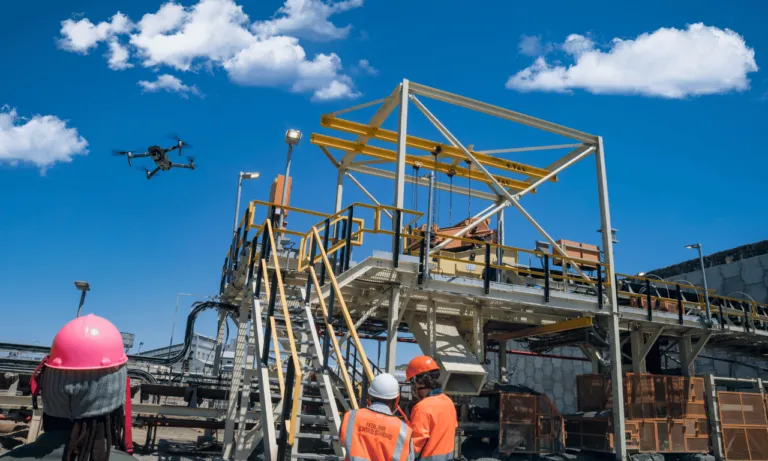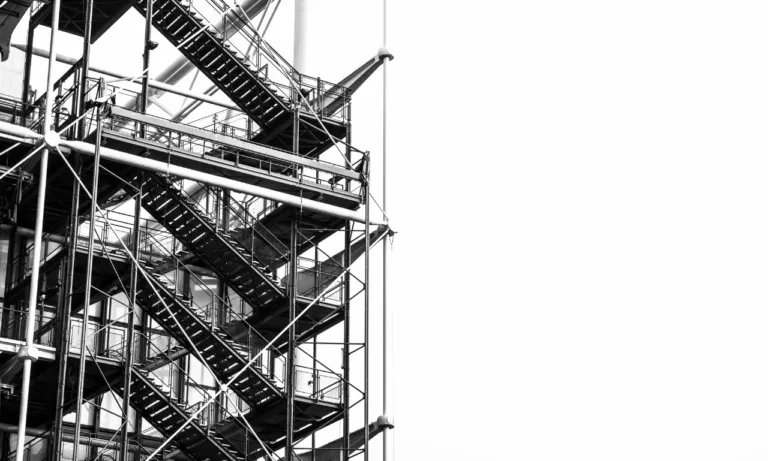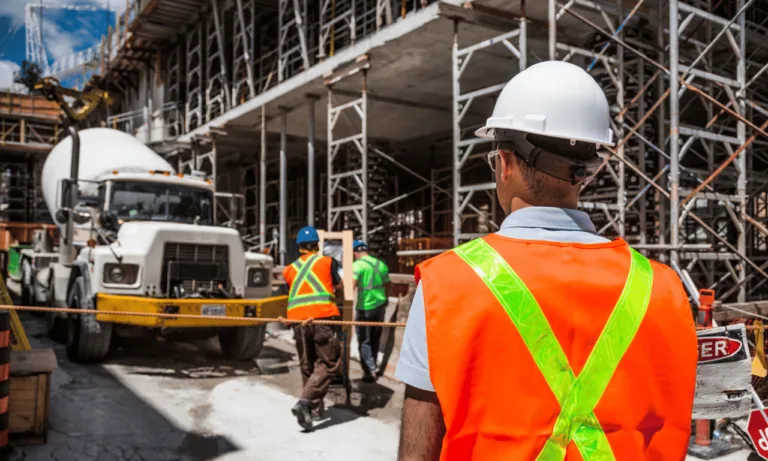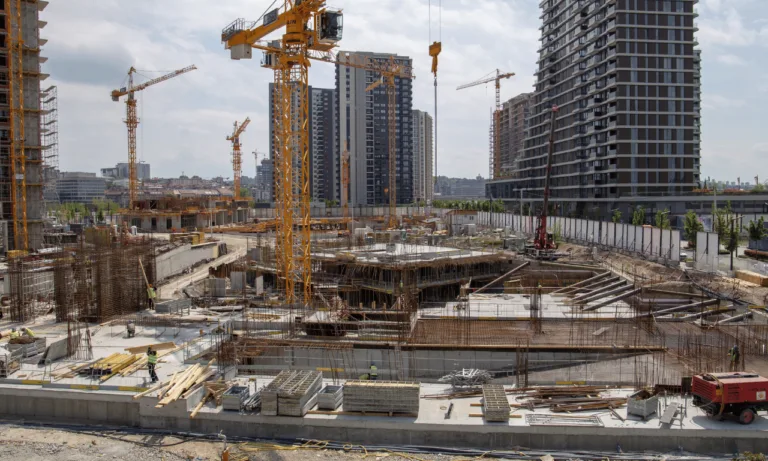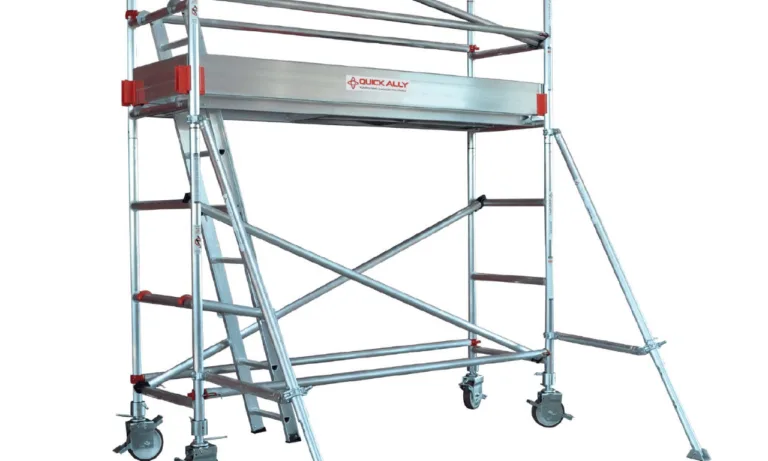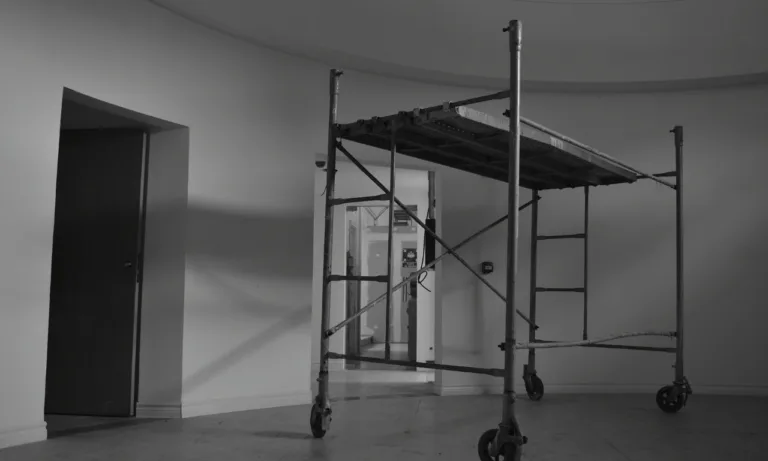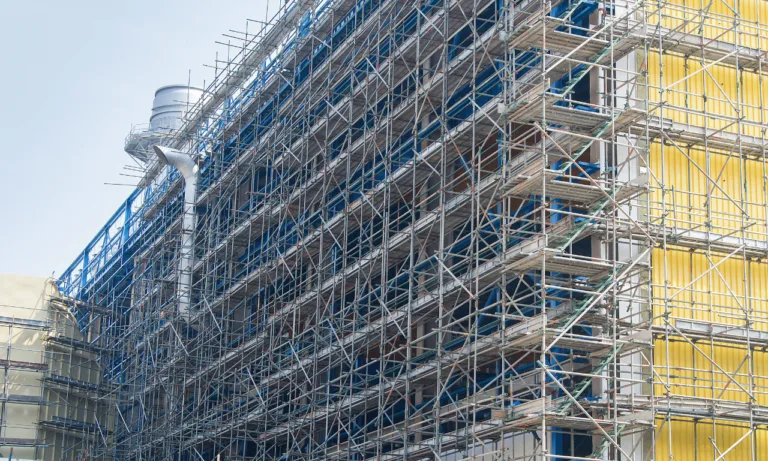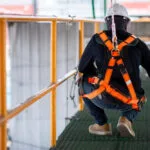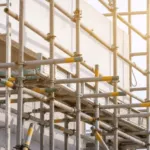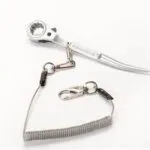Phone:
(+65)8319-0742
The Movable Scaffolding System (MSS) is a versatile industrial access solution that revolutionizes bridge construction. This innovative scaffold system, also known as mobile scaffolding or adjustable scaffolding, provides numerous advantages in terms of efficiency, flexibility, and cost-effectiveness.
Designed to facilitate cast-in-place bridge work, MSS offers the unique ability to provide formwork and move itself forward, resetting the formwork for the next span within a day. With its modular scaffold structure and aluminum scaffolding platform, MSS can handle various bridge sections, including box bridges, multi-cell box bridges, double-T bridges, U-Shape bridges, composite bridges with corrugated web, and bridges with external strut support.
Whether it’s continuous or span-by-span bridges, MSS offers significant benefits compared to traditional shoring formwork systems and precast segmental construction methods. Its adaptability allows it to handle curve bridges as well, making it an ideal solution for complex bridge construction projects.
Key Takeaways
- MSS is a movable scaffolding system that facilitates efficient bridge construction.
- It provides form-work for cast-in-place work and can move itself forward, resetting the formwork for the next span.
- MSS can handle a wide range of bridge sections and is adaptable to both continuous and span-by-span bridge construction.
- Compared to shoring formwork systems, MSS eliminates ground restrictions and offers more flexibility.
- MSS is a cost-effective alternative to precast segmental construction for certain bridge projects.
Types of MSS: Overhead and Underslung
Movable Scaffolding System (MSS) can be classified into two main types based on the positioning of its main support structure: overhead MSS and underslung MSS. Each type offers specific advantages and is suitable for different types of bridge construction projects.
Overhead MSS
Overhead MSS is assembled and dismantled behind the abutments of the bridge. It is particularly advantageous for concreting box or double T deck sections. The main support structure is positioned above the formwork, allowing for efficient and safe construction of these specific deck sections. Overhead MSS offers stability and flexibility in working at heights, ensuring the seamless execution of bridge construction projects.
Underslung MSS
Underslung MSS is used in the construction of decks on road and railway bridges, with spans typically ranging from 20m to 70m. This type of MSS provides support from below the formwork, allowing for flexibility in design and accommodating different deck sections and span lengths. Underslung MSS is adaptable to variable plan view radius as well, making it suitable for bridge construction projects that involve curved sections. With its versatility and adaptability, underslung MSS offers a reliable and efficient solution for constructing decks on various types of bridges.
| Type of MSS | Main Support Structure Position | Advantages |
|---|---|---|
| Overhead MSS | Above the formwork |
|
| Underslung MSS | Below the formwork |
|
Advantages of MSS compared to Shoring Formwork System
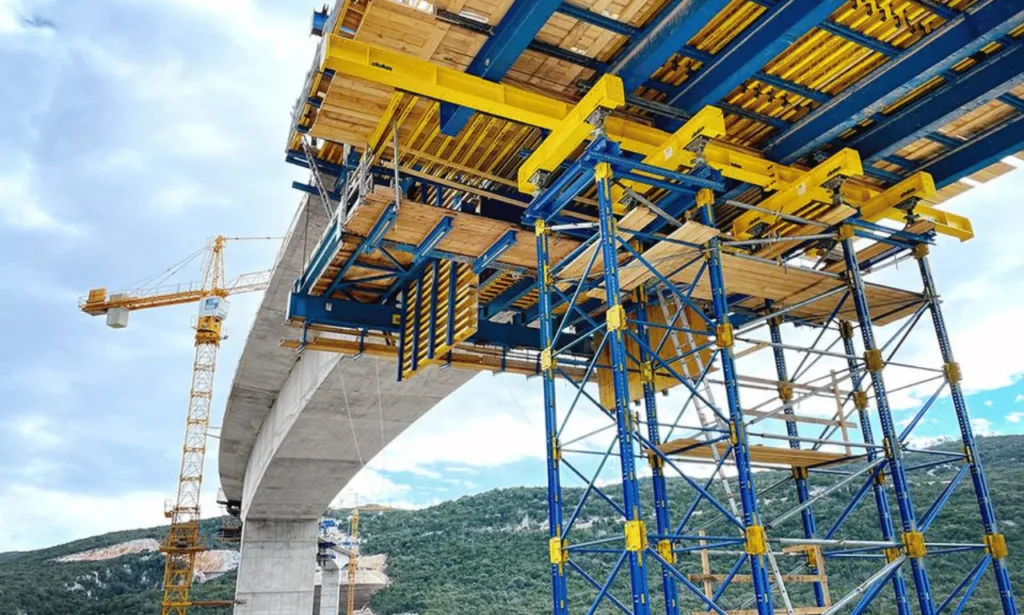
Movable Scaffolding System (MSS) offers several advantages over a traditional shoring formwork system, making it a superior choice for bridge construction projects. One significant advantage is its ability to operate without relying on shoring, providing greater flexibility and eliminating the need for ground support. This key feature makes MSS an ideal solution when ground restrictions, such as high piers, make shoring impractical or uneconomical.
Unlike a shoring formwork system, MSS is not limited by ground constraints, allowing for more efficient construction in challenging terrains or complex bridge designs. By eliminating the need for ground support, MSS provides a cost-effective solution, saving both time and resources.
Advantages of MSS:
- Freedom from ground restrictions
- Greater flexibility in bridge construction projects
- Cost-effective alternative to shoring formwork system
MSS’s independence from shoring offers several practical benefits. By removing the reliance on ground support, MSS simplifies the construction process, reducing the risk of delays or complications associated with intricate ground conditions. Additionally, MSS provides designers and engineers with greater freedom in bridge construction, enabling innovative and optimized designs.
Furthermore, MSS’s flexibility, combined with its ability to move forward, makes it an efficient and economical solution. It eliminates the need for constant repositioning of shoring equipment, streamlining the construction workflow and reducing labor costs. MSS’s adaptability allows for seamless construction progress, even in the presence of challenging ground conditions.
Overall, MSS’s advantages compared to a shoring formwork system make it a preferred choice for bridge construction projects. Its ground restriction-free design, flexibility, and cost-effectiveness make MSS an essential and reliable component of modern bridge construction.
Advantages of MSS compared to Precast Segmental Construction
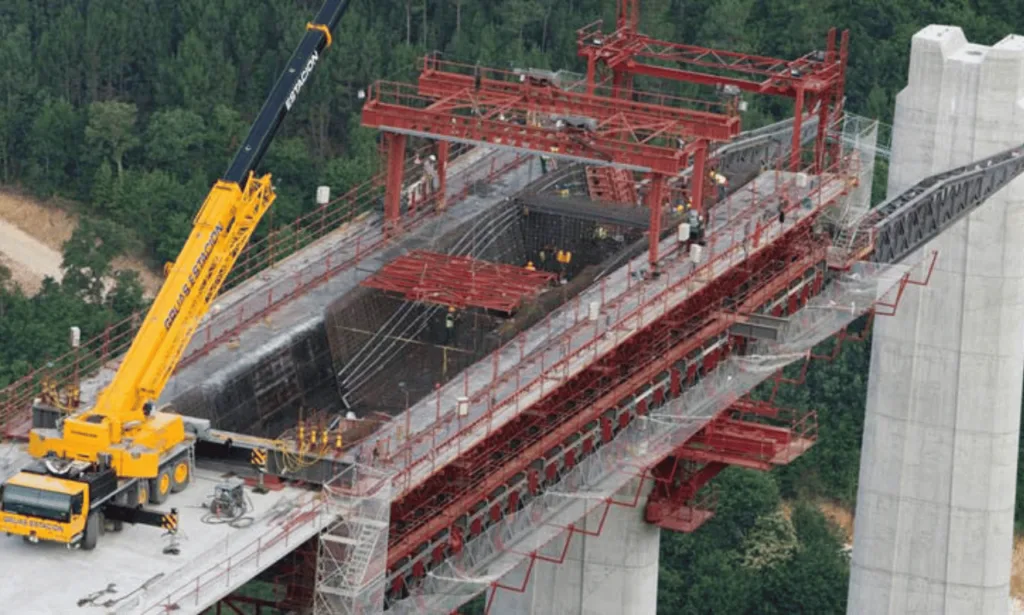
Movable Scaffolding System (MSS) offers distinct advantages over precast segmental construction in specific scenarios. When the deck area falls within a specific range or the total number of bridge spans is within a certain range, MSS proves to be a more cost-effective solution. Moreover, MSS allows for efficient completion of construction projects according to the normal construction schedule, resulting in significant time and cost savings compared to precast segmental construction.
MSS is particularly viable for bridge projects that meet certain size and quantity parameters. By utilizing MSS, project owners and contractors can achieve optimal efficiency without compromising quality. The key advantages of MSS over precast segmental construction include:
- Cost-effectiveness: MSS presents a cost-effective solution for bridge projects falling within specific size and quantity parameters.
- Construction schedule: MSS enables projects to be completed within a normal construction schedule, offering time savings compared to the longer timeframes often associated with precast segmental construction methods.
- Enhanced efficiency: MSS allows for streamlined construction processes, reducing the overall project duration and improving operational efficiency.
- Flexible design options: MSS offers greater design flexibility, allowing for customization to suit specific project requirements.
- Reduced reliance on precasting facilities: Unlike precast segmental construction methods, MSS eliminates the need for extensive precasting facilities, reducing costs and logistical complexities.
By considering the advantages of MSS over precast segmental construction, project stakeholders can make informed decisions that result in a more cost-effective and efficient bridge construction process.
MSS for Curve Bridge Construction
Movable Scaffolding System (MSS) proves to be a versatile solution for curve bridge construction. Just like shoring formwork systems, MSS can be designed to accommodate curve bridges, enabling its application in various bridge construction projects involving curves. This feature adds to the adaptability and flexibility of MSS, making it a valuable choice in the construction industry.
By utilizing MSS for curve bridge construction, engineers and construction teams can ensure the efficient and precise formation of curved bridge sections. The MSS can be tailored to match the unique curvature requirements, allowing for seamless integration into the construction process. This enables the construction of aesthetically pleasing bridges without compromising structural integrity.
Whether it’s a curve bridge on a road or railway, MSS provides a reliable and efficient solution. Its ability to handle curve bridge construction expands the possibilities for bridge designers, builders, and civil engineers. MSS proves to be an invaluable asset in achieving the desired bridge design and construction goals.
Benefits of MSS for Curve Bridge Construction:
- Accommodates bridge sections with varying curvatures
- Ensures precise positioning of formwork for curved sections
- Facilitates efficient construction of aesthetically pleasing bridges
- Provides flexibility in bridge design and construction
MSS’s capability to handle curve bridge construction makes it a preferred choice for projects that demand elegant and functional curved bridge structures. Its versatility, combined with its numerous advantages, positions MSS as an essential tool for construction teams involved in curve bridge projects.
Span-by-Span Casting with MSS
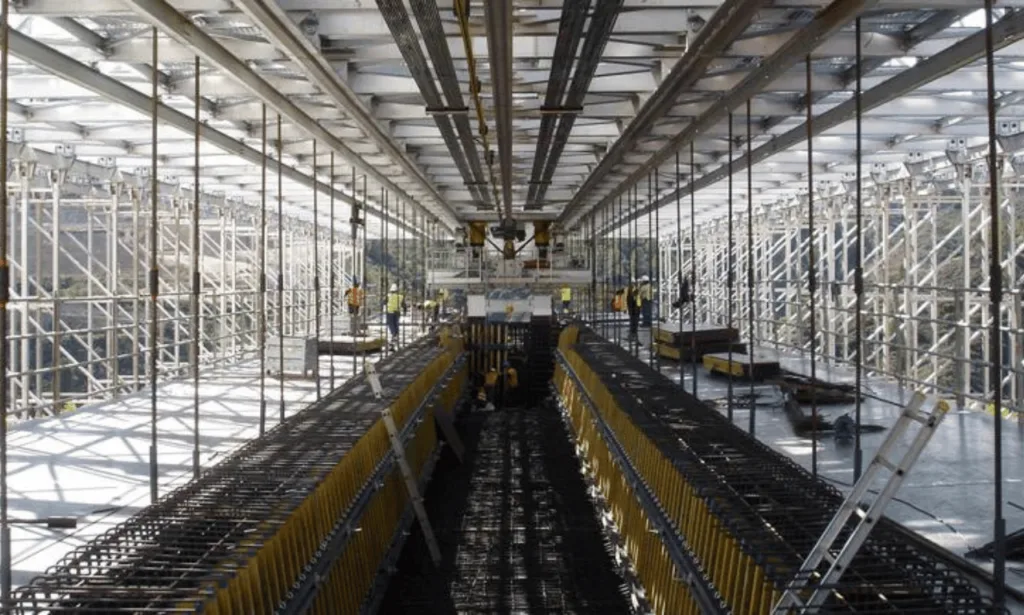
Span-by-span casting is an innovative construction method that utilizes the Movable Scaffolding System (MSS) to enhance bridge construction efficiency and control. Unlike precast segmental construction, span-by-span casting involves casting concrete spans individually, resulting in several key advantages.
Reduced Joint Requirements
Span-by-span casting with MSS reduces the number of joints in a bridge structure. With fewer joints, there is a decreased risk of water penetration, which enhances the overall durability and longevity of the bridge. Additionally, reduced joint requirements simplify maintenance and inspection processes.
Increased Durability
By minimizing joints and utilizing continuous longitudinal reinforcement, span-by-span casting with MSS creates a more durable bridge structure. The absence of joints helps to eliminate potential weak points, improving the resistance to external forces and enhancing the bridge’s overall structural integrity.
Improved Structural Efficiency
Span-by-span casting with MSS optimizes the use of materials, resulting in improved structural efficiency. The continuous casting process allows for enhanced load transfer capabilities, reducing the need for additional reinforcement and increasing the overall efficiency of the bridge design.
| Advantages of Span-by-Span Casting with MSS |
|---|
| Reduced joint requirements |
| Increased durability |
| Improved structural efficiency |
The utilization of span-by-span casting with MSS presents a cost-effective alternative to precast segmental construction. By eliminating the need for precasting facilities, this construction method offers greater flexibility in design and construction, enabling efficient bridge projects tailored to specific requirements.
Allowing for greater control, reduced joint requirements, and improved structural efficiency, span-by-span casting with MSS is revolutionizing the field of bridge construction, offering superior results and significant benefits.
Advances in MSS Technology
Advances in structural analysis programs and post-tensioning technology have revolutionized the design and construction of cast-in-place continuous spans using the Movable Scaffolding System (MSS). These advancements have significantly improved construction efficiency and productivity in bridge construction projects.
One major area of progress is the use of MSS for span-by-span casting, which offers comparable productivity to other construction methods such as incremental launching and precast segmental construction.
In addition, the evolving technology of movable scaffolding systems, including telescopic MSS and form travelers, has allowed for the construction of longer spans with shorter cycle times. These advancements have further enhanced the efficiency and speed of bridge construction.
Simplifying Bridge Design
With the continuous advancements in MSS technology, the design process for bridges has been greatly simplified. Structural analysis programs now provide engineers with accurate and efficient tools for analyzing the complex forces and loads that bridges are subjected to.
Furthermore, the use of post-tensioning technology has improved the structural integrity and performance of bridge elements. Post-tensioning allows for increased load-bearing capacities and reduced maintenance requirements, resulting in more durable and cost-effective bridge designs.
Bridge design recommendations specifically tailored to the use of MSS in span-by-span casting have also been developed. These recommendations ensure the safe and effective utilization of MSS in bridge construction, providing engineers with guidelines for optimizing construction methods and achieving optimal structural integrity.
Enhancing Construction Efficiency
The advances in MSS technology have led to significant improvements in construction efficiency. By utilizing MSS for span-by-span casting, construction projects can benefit from reduced joint requirements, increased durability, and improved structural efficiency.
The reduction in the number of joints through span-by-span casting not only enhances the durability of the bridge but also simplifies the construction process, saving time and resources. Continuous longitudinal reinforcement throughout the bridge span increases the structural efficiency and load-bearing capacity of the bridge.
The efficiency gains achieved through span-by-span casting with MSS are comparable to other construction methods, such as precast segmental construction and incremental launching, further highlighting the effectiveness of MSS in bridge construction projects.
The improved construction efficiency resulting from advances in MSS technology allows for faster project completion, reduced costs, and minimized disruption to traffic and surrounding areas.
Conclusion
The Movable Scaffolding System (MSS) offers numerous benefits for efficient bridge construction. With its ability to provide form-work and move forward, MSS provides a convenient and flexible solution for constructing cast-in-place bridges. The advantages of MSS over shoring formwork systems and precast segmental construction include increased versatility, cost-effectiveness, and improved construction schedule.
By utilizing MSS for span-by-span casting, bridge projects can achieve greater durability, structural efficiency, and overall construction efficiency. MSS technology continues to advance, allowing for the construction of longer spans with shorter cycle times. This revolutionizes how we approach industrial access solutions in bridge construction, ensuring the development of more efficient and resilient structures.
By choosing MSS, construction professionals can benefit from its adaptable design, reduced reliance on ground restrictions, and enhanced construction schedule management. Moreover, MSS’s ability to handle curve bridge construction further adds to its versatility. Overall, MSS is a game-changer in the field of bridge construction, providing a reliable and cost-effective solution that meets the evolving needs of the industry.
FAQ
What is a Movable Scaffolding System (MSS)?
The Movable Scaffolding System (MSS) is a form-work system for cast-in-place bridges that can move itself forward and reset the form-work for the next span within a day.
What are the types of MSS?
There are two main types of MSS: overhead MSS and underslung MSS.
What are the advantages of MSS compared to a shoring formwork system?
MSS does not rely on shoring, making it free from ground restrictions and more flexible in bridge construction projects.
How does MSS compare to precast segmental construction?
MSS can be a more cost-effective solution for bridge projects within certain size and quantity parameters, completing the construction job within a normal construction schedule.
Can MSS handle curve bridge construction?
Yes, MSS is designed to accommodate curve bridges, adding to its versatility in various bridge construction projects.
What is span-by-span casting with MSS?
Span-by-span casting is a construction method that utilizes MSS to cast concrete spans one by one, resulting in reduced joint requirements, increased durability, and improved structural efficiency.
How has MSS technology advanced?
Advances in MSS technology, including telescopic MSS and form travelers, allow for the construction of longer spans with shorter cycle times, improving construction efficiency.
What are the benefits of using MSS for bridge construction?
MSS provides numerous benefits, including increased versatility, cost-effectiveness, improved construction schedule, greater durability, and structural efficiency.
Source Links
- https://www.linkedin.com/pulse/movable-scaffolding-system-mss-introduction-shu-tat-ooi-p-e-
- https://www.linkedin.com/pulse/movable-scaffolding-system-mss-strukturas-as-3mwrf?trk=public_post_main-feed-card_feed-article-content
- https://www.marcorosignoli.com/blogs/publications/movable-scaffolding-systems-mss-introduction
